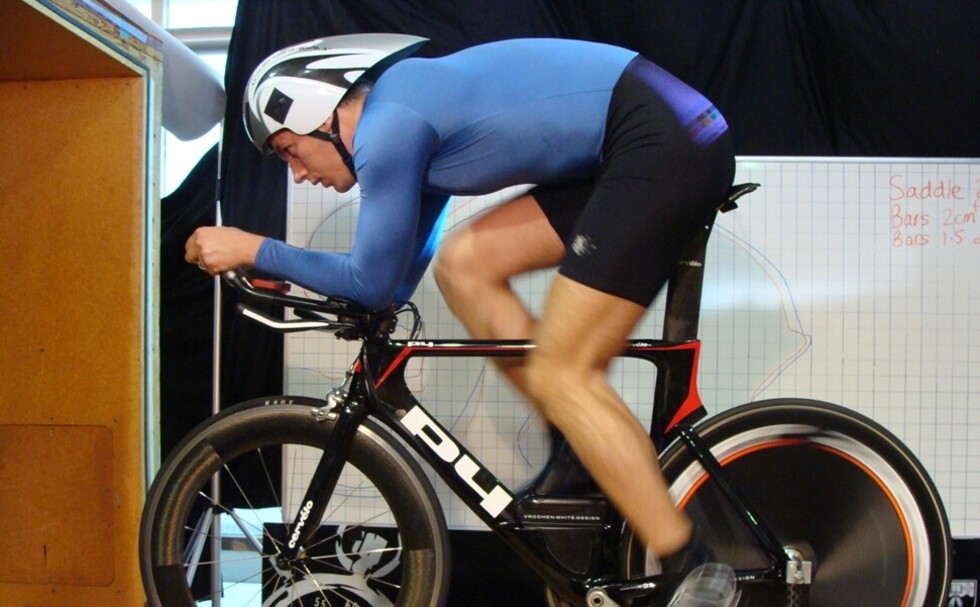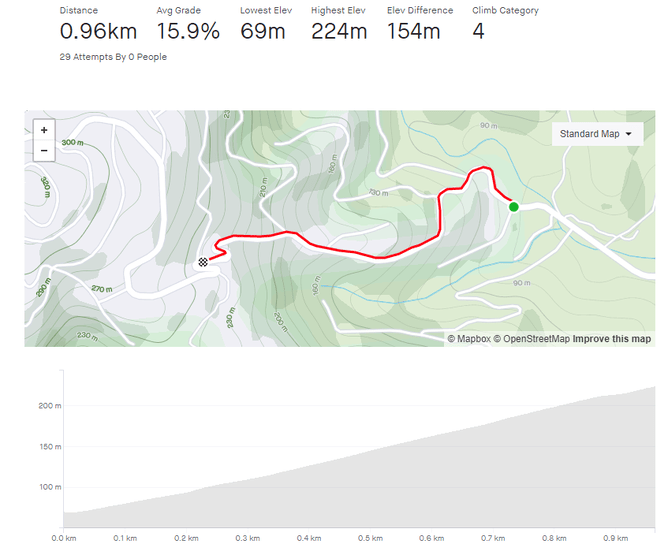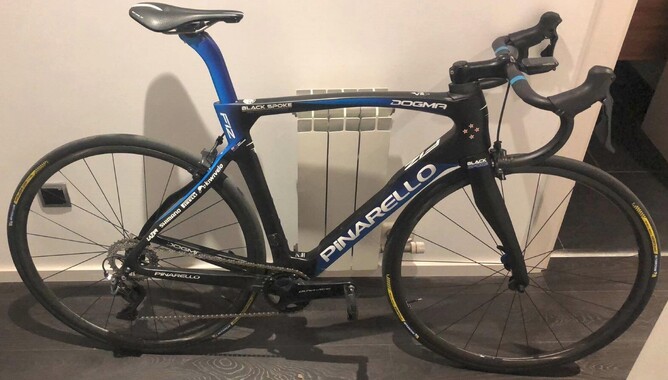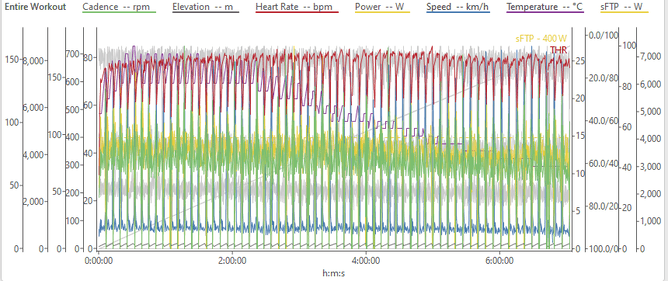If we ignore all the less pleasant things that have happened and focus on cycling, one might say that 2020 has been the year of Everesting. The first half of the year saw a number of professional and keen amateur riders taking on the challenge in the absence of racing.
If you haven't heard of Everesting, it is defined as climbing the same total elevation as the height of Mt Everest in a single ride. Hells 500 are the keepers of this peculiar faith.
The rush of elite riders into the game has seen a marked reduction in times. At the beginning of 2020 the record was 8.46.11, set by Tobias Lestrell in 2017.
The first blow of the new wave was struck in May by Phil Gaimon – taking the record to 7.52.12. A few days later Keegen Swenson lowered it to 7.40.00.
In June Lachlan Morton managed two attempts in the course of a week to lower the record to 7.29.00. He was followed a few weeks later by a rider very familiar with doing a lot of climbing in July – Alberto Contador narrowly edged the record with a 7.27.20.
That time only lasted another three weeks before Ronan McLaughlin shattered the record – setting a 7.04.41. This was the first attempt (as far as I know) that involved serious equipment weight reduction.
Then at the start of October Sean Gardnerwas the first to break 7 hours with a 6.59.38. On a hill with an average 15.5% gradient.
Not to be outdone, the ladies have also slashed hours from the record this year. From 12.32 at the beginning of the year to 8.53.00 by former world TT champion Emma Pooley in July. I aim to revisit the female record in the next few months, for now the focus is on the mens record.
Logically, further reductions in the record are likely to be small and hard won.
But that is no reason not to try.
Thus speedtheorist Hayden McCormick is taking on the challenge this weekend. Whether he can threaten the record or not – the preparation has been interesting.
What it takes
Course
The first challenge is finding an appropriate hill. We scouted many options – virtually for my part, on the road for his and landed on a residential street in the beachside area of Platja d’Aro in North eastern Spain.
A truly unpleasant 15.9% average gradient climbs 152m in only 960m (Strava segment elevation slightly inflated). Further, there are corners that make the descent hair raising. To the point that normal riders have not only been observed walking up the hill, but down as well. Personally I'd be patting myself on the back for riding up once.
The ideal everesting hill for record purposes would have a consistent steep gradient and a straight, smooth descent. Fundamentally you want to spend as little time descending as possible. It's noteworthy that other fast recent attempts have had descents where the rider could hit 100kph, the course we're using allows a maximum of 85kph but normally low 80s when pushing it.
We’ve run trials on multiple start and turn points on the climb to determine the most efficient option. Which means not including any gentler gradients.
Equipment
Hayden rides for the Black Spoke Cycling Academy, who use Pinarello Dogma F12 bikes. While there are reasons to purchase a Dogma, low weight is not one, so his bike has been on a harsh diet.
As a rough guide, every 250g is worth one minute on the total. Thus everything non-essential is getting left behind.
Lighter wheels, tyres and tubes have been fitted. Carbon bar and stem. No bar tape! The stem is shorter than his usual to give a more upright position for climbing.
Big chainring and front derailleur removed. All the smaller cogs on the cassette have been replaced with spacers.
In this guise the bike is only good for climbing. But it’s now 6.7kg.
Further measures include wearing only bibs and a mesh undershirt – lighter than a normal jersey. The lack of jersey pockets and bottle cages is solved by having bottle and fuel handups from supporters.
Even the heart rate strap hasn’t made the cut, nor will his phone be on board. We still need to discuss the Pantani-esque earring…
edit: we discussed the earring - apparently it's stylish so will help him go faster??
Training
Prior to the attempt Hayden has ridden this climb 185 times. Including a seven hour bout that fell short of a full everesting as a result of not having good enough elevation data.
The last few weeks have consisted of a solid session on the hill, followed by a couple of days of recovery before doing it again. Specificity is the name of the game - his fitness was already high so we needed to turn that into the ability to ride 5mins on, 1min off for 7 hours. Where better to do that than the actual climb to build familiarity.
Additionally he has been sleeping in an Altitude tent with the aim of further improving oxygen carrying capacity.
Power
In case you’re wondering what it takes to even be in the conversation for a fast everesting – right on 5 watts per kilo. That’s just over 350w for a 5min climb. For 59 laps.
Oh, I should mention that his power meter under-reads slightly. So the numbers with an accurate meter would be a little higher.
Nutrition
The keys to endurance are nutrition and pacing. Yes fitness is important, but you can mitigate that by pacing slower. Slower isn’t an option here so fuelling has to be based on replacing as much energy as his gut can process.
Support from Maurten allows access to high transport fuel mixes that mean he can take in 80-90g of carbohydrate per hour. This still isn’t close to what he will be burning – the deficit is made up from energy stores in the body.
Support
This wouldn't be possible without his crew of mask wearing, socially distanced helpers (Spain is in a bad way right now). They will be providing food and fluid as well as tracking his intake to make sure he doesn't under fuel. Also taking splits and providing encouragement.
Can he do it?
Our trials have indicated that it’s possible to break 7 hours, despite the non ideal descent. But by no means easy.
There are a lot of variables, while we’ve controlled as many as we can and tested scenarios extensively there is always the risk of mechanical or vehicular interference.
And of course it is a significant physical challenge. There is very little room in the schedule for fatigue or loss of focus. It's worth noting that Max Stedman missed the record (but still posted a good time) in a recent attempt (17% gradient) as his back seized up. Additionally a world tour rider attempted it on a 20% gradient climb on Friday (16th October) and was not able to finish. I expect that misses will be common as riders try ever steeper gradients and push the limits.
As of now Hayden has done everything he can to prepare, all that remains is to leave everything on the road on Sunday.



